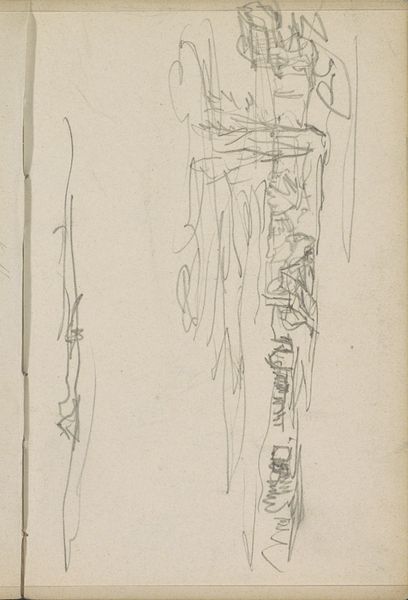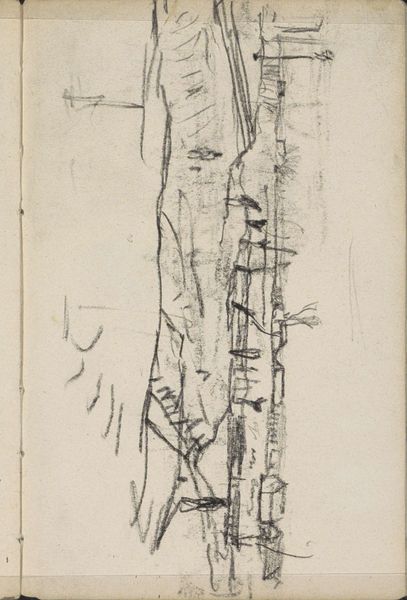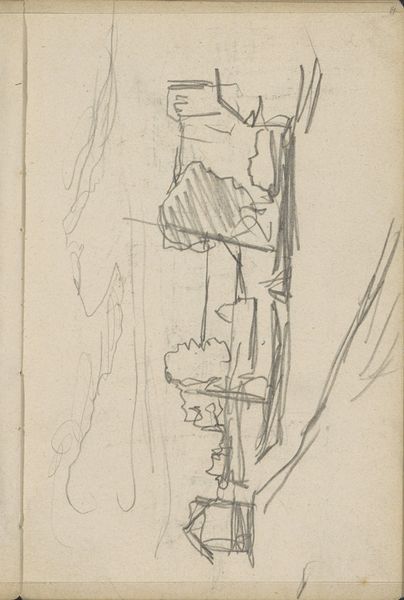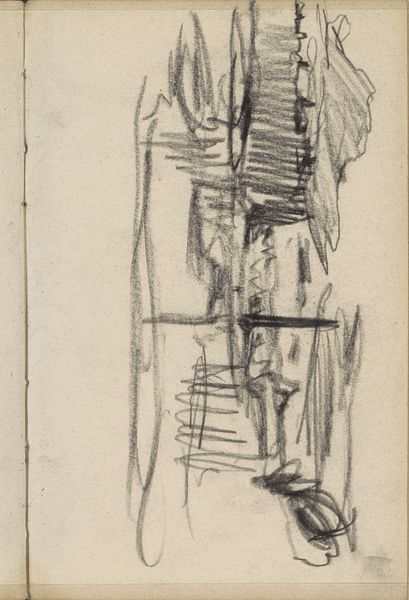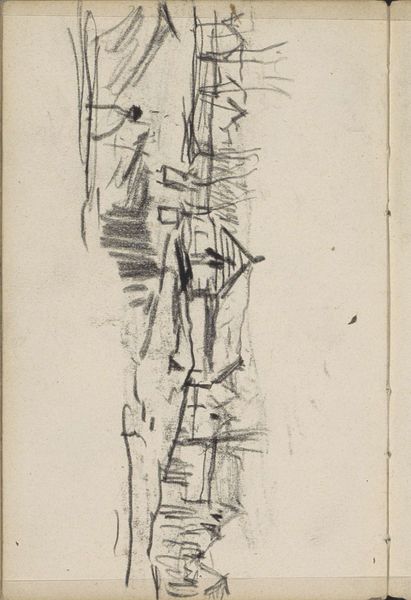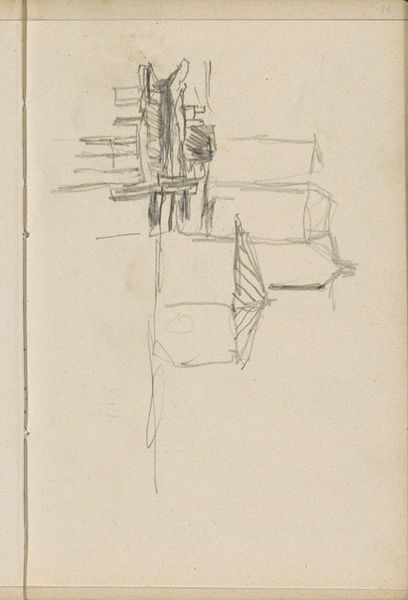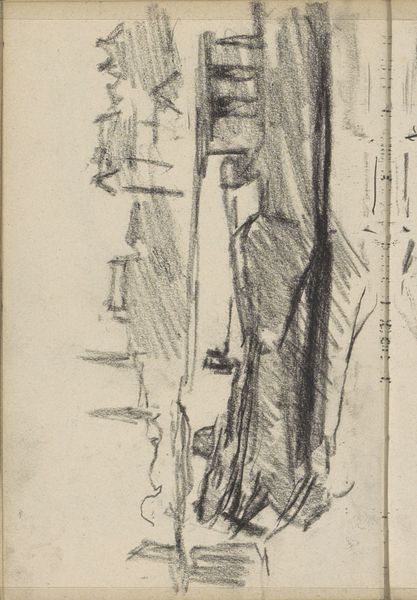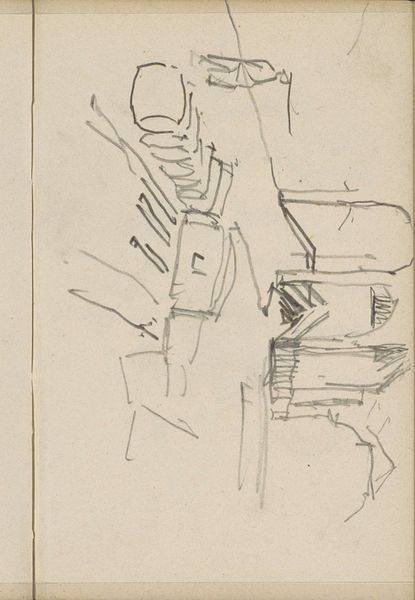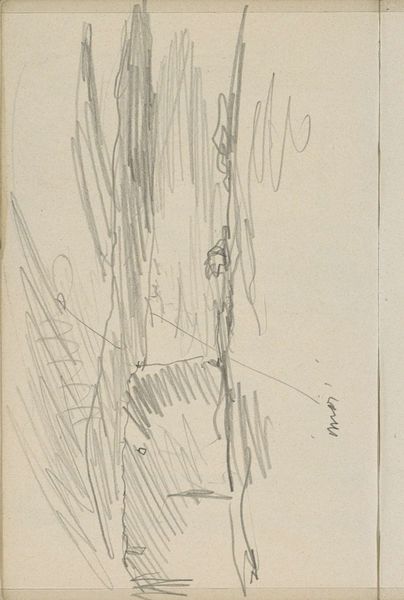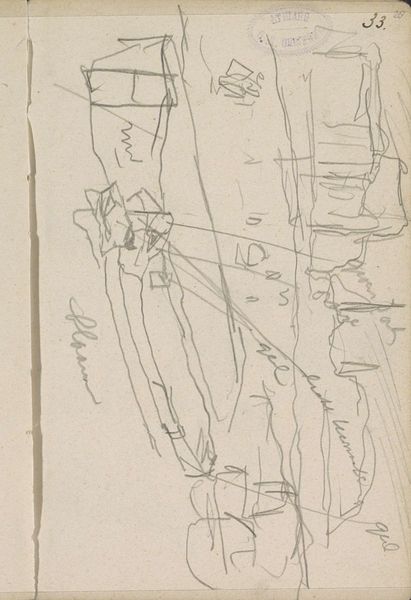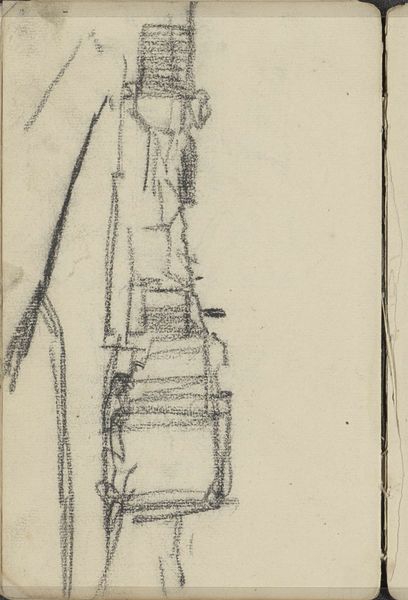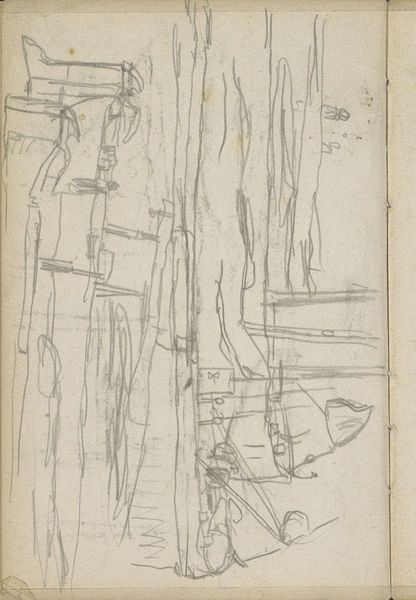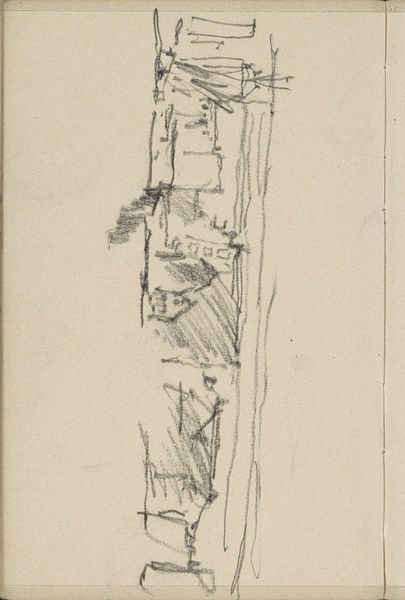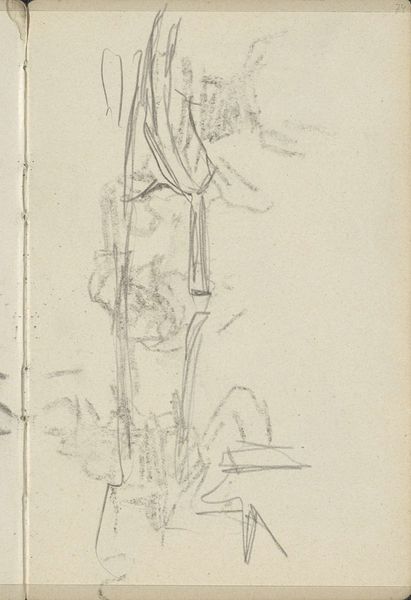
Copyright: Rijks Museum: Open Domain
Curator: I’m immediately struck by the almost frantic energy of this sketch. It's stark. Editor: Indeed. Here we have George Hendrik Breitner’s pencil drawing, “Landschap met bebouwing,” or “Landscape with Buildings,” created circa 1914. It resides here at the Rijksmuseum. Curator: It’s fascinating to consider what a rapidly drawn landscape reveals. Note how Breitner reduces buildings to stacked shapes, all implied with minimal shading. The material itself, the paper, takes on significant importance given how much negative space exists. Editor: The bareness emphasizes form. Consider the composition; it's daringly vertical. The sharp angles depicting buildings cut into the sky with raw, linear precision. The lack of embellishment invites us to ponder what exists or, rather, existed in that landscape. Curator: It provokes us to think about how places become represented. A rapidly growing urban center requires an artistic process and an economic model ready to meet it. One could imagine the pencil, readily portable and cheap, as the tool best positioned to record modern transformation. What stories about labor are sketched onto this page? Editor: Certainly, there's a tension between the permanence suggested by the subject—buildings—and the ephemerality of the pencil sketch. It makes you wonder about memory, loss… or even a quick urban development that transforms the artist's relationship with space. Curator: Precisely! Perhaps, this work represents not just buildings, but the rapidly changing socio-economic fabric of a society undergoing massive transformations in labor, land usage and architectural practice. The work appears “unfinished,” as the old saying goes, precisely because urban society constantly re-writes itself, with material effects on where one can go, what can be purchased, and whom one may encounter in a day’s work. Editor: Well, it's true; this is definitely not your idyllic landscape, presented for our pleasant contemplation. Instead, Breitner gives us this glimpse into the evolving visuality of lived environments. Curator: What is truly incredible is the immediacy this artwork summons in how an artist in 1914 would experience social progress on paper as material reality.
Comments
No comments
Be the first to comment and join the conversation on the ultimate creative platform.
